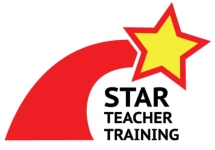Sometimes the simplest ESL activity is the best and Listen & Point is about as simple as it gets. It’s also insanely flexible and useful for large classes because of its high rate of participation. It’s also perfect for both preschool and primary school; I’ve used this activity hundreds of times with students aged three to ten (and even with adult beginners, too).
How to Play Listen and Point
In this Total Physical Response (TPR) activity the students listen to you and point to the correct picture in their books or on a handout.
They can play as individuals or they can share materials in pairs or small groups.
The game can use language as simple as you listing vocabulary words such as “cat!” or “dog!” Or it can use complicated language, such as you describing the item for them to point at, “This is a place where you can order food from a waiter and sit down to eat.”
I often start with the plain vocabulary version and then make it more complicated by putting the vocabulary into level appropriate sentences.
You can make the activity more engaging by adding a level of competition by putting students in pairs or small groups so they can see who’s fastest. Boys especially will find this more engaging. However, you don’t need to keep score or identify a “winner.” I’ve found that young students are just happy for the challenge.
Related post: Increasing ESL Participation Rates

Extra ESL Activity Tips
I always suggest to teachers to follow a few extra guidelines:
- Ready Signal: Say “Fingers up!”/”Fingers ready!”/”Hands up!” in between each round. This helps everyone separate the rounds and keep on track. It also helps you see if some students have stopped participating or are struggling.
- Fast is Fun: Keep the pace up. Don’t leave a lot of time between rounds. The students quickly get bored and distracted if there are long delays.
- Show the Answers: Keep a copy for yourself to point at. Students can quickly look up at you to check their answers.
- Use a Delay: Don’t immediately point at the correct picture as you’re saying it. Students will just copy your answer instead of listening. Give a delay until most students have responded before you point at the correct picture.
- Monitor: Walk around and monitor, but don’t try to look at every students’ answer each round because it will slow your pacing. Instead, aim to get a decent sampling of each round to tell how the class is doing.
- Age Appropriate: Students under 4 years old aren’t able to share things, so they should have their own papers.
Related Post: Move Your Students with Kinesthetic Learning and TPR in ESL
Flexibility
This ESL activity is great for all sorts of topics and levels. Here are some examples of what I’ve done;
- pictures of jobs, animals, family, fruits, etc.
- written word recognition
- plural vs. singular – “cat” vs “cats”, “apple” vs “apples”

- describing people, places, activities, and things with scene cards
- “can” with animals

Students can also listen to you read excerpts from their books, scan, and point at the correct dialogue bubble. For example “He’s wearing jeans and a yellow shirt.”
Looking for more ESL Activities and ideas? Check out:
What other ESL listening activities do you know? Make sure to also like and share!






